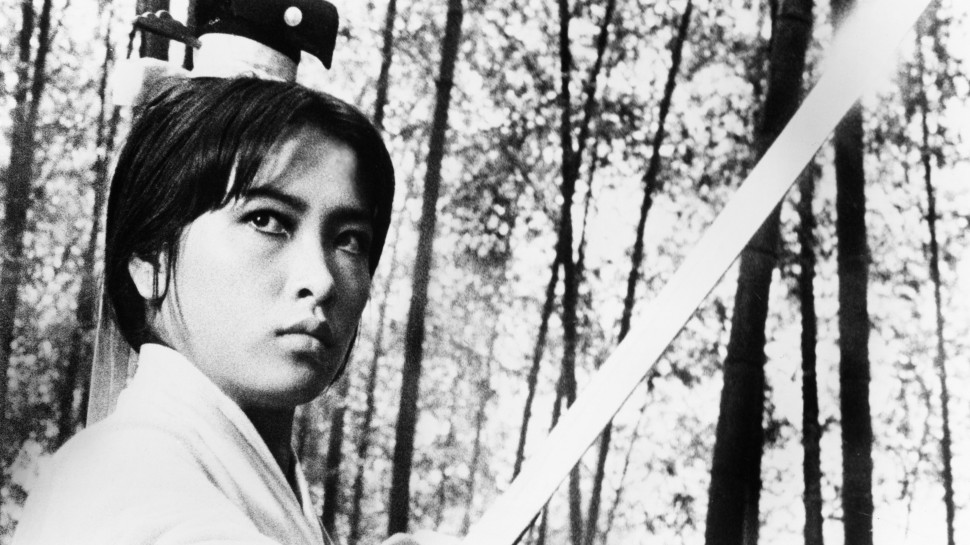
King Hu and the Art of Wuxia
Universally recognized as one of the most influential and important Chinese directors in the history of cinema, King Hu (1932-97) came to fame making wuxia movies – the swordplay subgenre of martial arts cinema. In the process of perfecting the genre, Hu was also able to make it a vehicle for his authorial personality, much as Kurosawa would do with the samurai film and Minnelli with the Hollywood musical. While Kurosawa had a direct influence on Hu, the comparison with Minnelli is equally apt since both men were highly cultured aesthetes who paid special attention to the décor and art direction of their films and who reveled in the ability of mise-en-scène, movement and the spatial composition of the frame to express character and the relations between characters.
Born in Beijing, Hu Jinquang grew up in comfort, more interested in Chinese opera than in cinema. Still in his teens, he left Beijing for Hong Kong in 1949, just before the People’s Liberation Army entered the capital, and never returned. After a few years of scrounging for whatever jobs he could find, he ended up working in film “by accident,” as he put it, beginning with set design and construction. By 1954, he was acting onscreen, and in 1958, he signed a contract with the fabled Shaw Brothers, then Hong Kong’s most famous and prestigious studio. There he became apprentice to another aesthete, Lee Hanxiang, the director who specialized in opera films and historical melodrama. After assisting Lee on his classic The Love Eterne (1963), he was given the chance to direct Sons of the Good Earth (1965), a patriotic epic set during the War of Resistance Against Japan.
It was with his second directing assignment (and first wuxia film), Come Drink With Me, that Hu’s mastery of composition and editing became apparent. The success of this film signaled that audiences had responded to Hu’s decision to emphasize the valor and skill of his protagonists, rather than the use of magical powers, and to tone down the genre’s melodrama in favor of a sober stoicism that nevertheless exploded into flights of fancy during the action sequences. Emboldened, Hu left Shaw Brothers, which he saw as artistically inhibiting, and relocated to Taiwan, whose smaller film industry received him with open arms.
Based in Taipei from the late 1960s until the early 1980s, Hu became a precursor of today’s transnational directors as he worked as an independent filmmaker, using talent and funding from both Taiwan and Hong Kong and even shooting in South Korea at one point. During this period, Hu continued to refine the wuxia film in the direction of both greater subtlety and greater expressivity begun with Come Drink With Me.
He encouraged his martial arts choreographers to draw from the alternately fluid and rhythmic movements of Chinese operas. Rather than resorting to fast or slow motion, footage printed backwards, animation or other early special-effects techniques, Hu relied as much as possible on the actual skills of his performers and on the magic of editing. Although the films often have quite complex plots, Hu spends as little time as possible on exposition, preferring character expressed through action and philosophy presented as a set of spatial relations within the frame and temporal relations between shots. Perhaps Hu’s most striking generic innovation was his emphasis on the archetype of the female swordfighter, and his use of this figure to generate gender and sexual ambiguity among his characters, while making her the moral center of the action, much like Shakespeare’s comic heroines.
Hu’s “golden age” proved short-lived however. His massively ambitious and expensive epic A Touch of Zen was the first Chinese film to win an award at Cannes, but it lost money during its initial release in Hong Kong and Taiwan. Although it is today recognized as Hu’s pinnacle, the film’s financial failure made it harder for him to raise money. At the same time, the worldwide fame of Bruce Lee was shifting the martial arts genre from wuxia to the “kung fu” films, with their contemporary setting and their emphasis on unarmed combat. Hu responded by shifting from films of swordplay to work emphasizing intrigue or the supernatural, but in 1982, he moved to California in an ill-fated attempt to resurrect his career.
Hu’s innovations ultimately helped revive the wuxia genre and are explicitly cited in recent films by Wong Kar-wai, Zhang Yimou and, especially, Ang Lee’s Crouching Tiger, Hidden Dragon. He is also acknowledged as a major influence on the “New Wave” filmmakers in both Hong Kong and Taiwan: Tsui Hark and Ann Hui on the one hand; Ang Lee and Tsai Ming-liang on the other. The Harvard Film Archive is proud to honor the work of this master filmmaker by presenting eight of Hu’s eleven features, including all of his classic wuxia films. — David Pendleton









